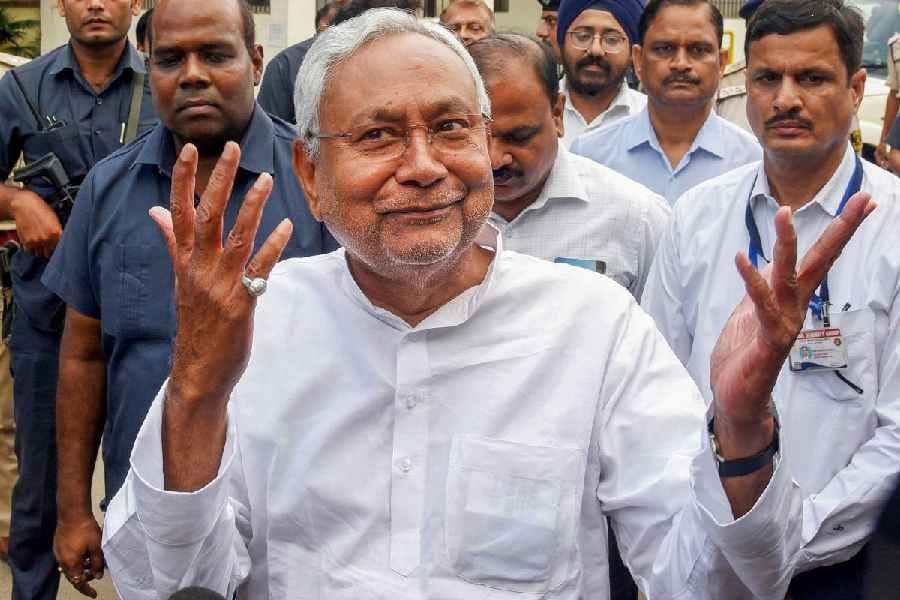In what was his second volte face in less than 18 months, Bihar Chief Minister and Janata Dal (United) president Nitish Kumar on Sunday, January 28, snapped ties with ally Rashtriya Janata Dal (RJD) and formed a government with the Bharatiya Janata Party (BJP) in the state.
In a matter of a few hours, Kumar resigned as the chief minister, walked out of the Mahagathbandhan government with the RJD in the state, quit the INDIA alliance, returned to the National Democratic Alliance (NDA) fold and got sworn in as the chief minister of Bihar for a record-breaking ninth time.
Also Read: JD-U will be finished in the Lok Sabha elections, says Tejashwi Yadav after Nitish’s exit
A rattled RJD, which lost power on Sunday, claimed that the Janata Dal (United) will be “finished” in the upcoming Lok Sabha elections that are scheduled in April-May this year. Tejashwi Yadav, who was Nitish Kumar’s deputy until yesterday, called the JD(U) chief a “tired Chief Minister”.
Meanwhile, Congress compared him to a “chameleon”, and said that the people of the state will “never forgive his betrayal”.
History, however, clearly shows that Nitish Kumar is no stranger to ‘flip-flopping’ – he has jumped alliances multiple times over the past decade and has come out of it unfazed.
Also Read: Nitish Kumar: Master of the art of changing governments
Times when Nitish Kumar flipped
Nitish Kumar is infamous for flipping parties and leaving the alliances in the state government in a hot mess. Before 2024, the last time Nitish Kumar broke his alliance with the BJP was in August 2022. Then his party tied up with the RJD in the state when Nitish Kumar was elected as the chief minister once again and Lalu Yadav’s son, Tejashwi Yadav, was elected as his deputy.
In a political career spanning over four decades, Nitish Kumar has changed his political allegiances several times and is famously quipped by the sobriquet – Paltu Ram.
Nitish Kumar was catapulted to the limelight of Bihar politics in March of 1990 when he helped his senior in then Janata Dal, Lalu Prasad, become the chief minister of the state. In those days, Nitish Kumar used to call Lalu Yadav his ‘badey bhai (elder brother)’.
Also Read: Course correction or last roll of the dice? The many battles of Nitish Kumar
Kumar won his first assembly election from Nalanda district’s Harnaut seat in 1985. Four years later, he was elected to the Lok Sabha in 1989 on a Janata Dal ticket from Barh. He won from Barh again in the 1991 mid-term election.
However, in 1994, he rebelled against Lalu Yadav’s control of the Janata Dal in Bihar. He allied with veteran socialist leader George Fernandes to form the Samata Party. In 2003, the George Fernandes-led Samata Party and the Sharad Yadav-led Janata Dal (United) merged.
In 2013, Nitish Kumar ended a 17-year-old alliance with the BJP after Narendra Modi was appointed as the Chairman of BJP’s Lok Sabha election campaign committee. The JD(U)-BJP alliance was born in 1998. He snapped ties just a year before the BJP would win the parliamentary elections with a thumping majority.
In 2015, Kumar’s JD(U) forged an alliance with the RJD and the Congress in Bihar to take on the BJP which was fresh from its mammoth victory in parliamentary elections the previous year. The alliance swept the polls with a huge majority, winning 178 out of 243 seats. However, the ship got wobbly and JD(U) decided to part ways with its alliance partners in 2017. The fissures in the alliance had been visible for quite some time when the JD(U) praised the BJP government’s demonetisation move in 2016, while other alliance partners heavily criticised it. The party also supported the BJP’s president candidate Ram Nath Kovind then, much to the displeasure of the RJD and Congress.
On July 26, 2017, Nitish Kumar resigned from his post after the RJD’s legislative party decided that the Deputy Chief Minister, Tejashwi Yadav, would not step down despite facing corruption charges.
“I tried my best to save the alliance. I did not ask for anybody’s resignation. Tejashwi met me. I only asked for an explanation of the charges against him. It became impossible to work in this environment. This is the call of my soul. I spoke to Rahul (Gandhi) ji. I wanted to save the alliance. There are questions about someone inside the government. I could not answer for him. There was no point in running this government. This is against my nature and the way I work,” Kumar said after quitting.
Soon, he took oath as the head of the state’s government, which included the BJP and its allies only to end it in 2022.

